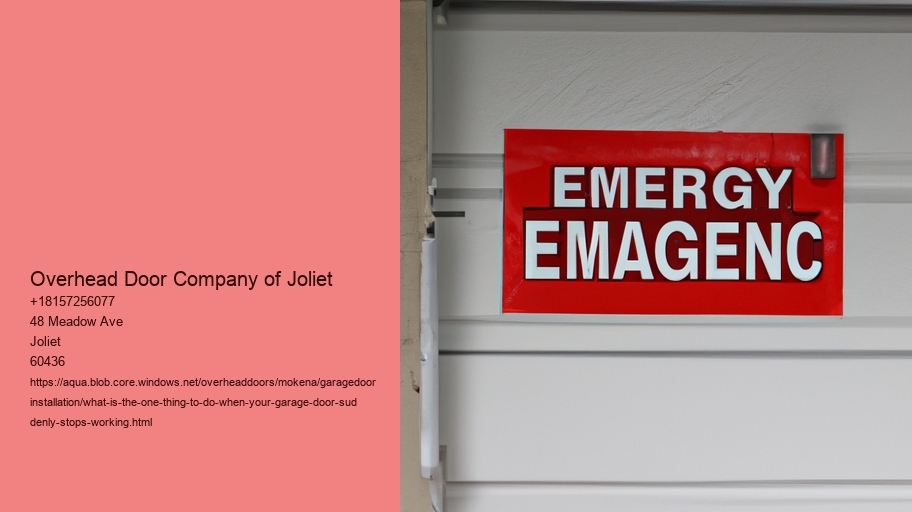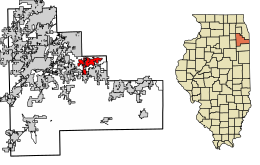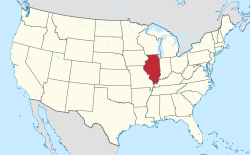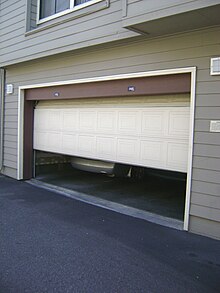Determine the Type of Garage Door and Opener
It is essential to understand the garage door and opener you have before you can start troubleshooting. .
Garage doors generally fall into different types based on their appearance and operation.The most frequent kinds are roll-up, sectional, and tilt-up doors.Sectional doors are made of panel sections connected with hinges, allowing the doors to bend as it is closed and opened on a vertical track.Roll-up doors, typically seen in commercial spaces, are constructed from sections of wood that are rolled up into coils.
The tilt-up door on the contrary, is a solid, single piece that opens by tilting inward and up.Also important is knowing the type of garage door opener.The three main types are belt-drive, chain drive, and screw-drive openers.Chain-drive openers, which rely on the use of a chain made of steel to lift and lower the door, are sturdy and affordable but they are noisy.Belt-drive openers work similarly, but use a rubber belt, making them quieter and a good choice for attached garages.Screw-drive openers are able to move the door by using a threaded steel rod, offering a balance between costs and noise.
Once you've identified your garage door's type and the opener's model the next step is to carry out an initial check for typical issues.Ensure that power is connected to the opener by examining the plug and breaker.Inspect the release cord for manual to make sure that it isn't pulled, which could disconnect the door from the opener.Examine the door's tracks and rollers to see if they have obstructions or damage and clear any obstructions.
If necessary, lubricate the moving components. A lack of lubrication could cause them to jam or snag.If your door continues to not function, try resetting the opener.This is often a solution to electronic malfunctions or faults.Consult the manual for your opener to find specific instructions for reset, since the process may differ between models.Many modern openers feature a reset button, whereas others require disconnecting the plug and reconnecting.
In certain instances it could be more complicated like a damaged spring or a damaged motor which will require expert assistance.Springs are under a lot of tension and are dangerous to repair without proper tools and expertise.
In the end, if your garage door suddenly stops working then the
Check for Obstructions or Debris
It's frustrating and even confusing when your garage door stops working suddenly, especially if you utilize it regularly.
This simple but effective step can be used to identify the issue, and then restore the functionality of your garage.Garage doors are based through a system of tracks, rollers, and other moving parts that need to be clear of any obstacles in order to function smoothly.Over time dirt, leaves, small rocks or other debris can build up along the tracks, or get stuck in the rollers.Even small obstacles could stop the door from opening or closing properly.Therefore an inspection thorough of these components should be your first step.
Start by looking at the tracks both on the left and right side of the door. Check for obvious obstructions or debris buildup. If you spot something odd, such as a twig, or a rock stuck within the track. Take it out with care.
The issue may not always be apparent. To check if the problem is still there, try running your hand along the track. Also, ensure that the tracks are properly aligned. This is because misalignment could result in the door jam.What is the one thing to do when your Garage Door Suddenly Stops Working? - metal
- metal
- cost
- Moody's Investors Service
Check the area surrounding the door. Sometimes, objects within the garage could slide or move, creating obstacles for the door. Check to ensure that the garage area is clear of obstructions and there are none of the objects that could block the door.
Examine the sensors to determine why the door is not opening after you have removed any obstructions.
The sensors on modern garage doors may fail when they're dirty, or not aligned correctly.In conclusion, when faced with an garage door that suddenly isn't working, looking for obstructions or debris is a reasonable and often useful first step.It will require only a few tools and know-how, but it will save time, money and the hassle of calling a professional for what could be a straightforward fix.By making sure that the path is clear and
Check the remote control and Wall Switch
It's crucial to examine the wall switch and remote control.
These parts are usually the reason for an unresponsive garage door, and doing a check can help you save time and avoid unnecessary expenses.First, consider the remote control.This handheld device is your primary tool for operating the garage door without direct physical interaction.Over time, remote controls can experience issues such as drained batteries, signal interference, or even internal damage.Start by replacing the batteries with new ones.It might seem simple, but dead batteries are a common reason for a garage door not responding.If the problem persists after replacing the batteries, try reprogramming the remote according to the manufacturer's instructions.Additionally, ensure that the remote is within the recommended range and that there are no obstructions blocking the signal.
Then, pay attention to the wall switch, which is another essential component in the garage door's mechanism.
The wall switch is directly connected to the garage door opener and often provides a more reliable means of operation.Inspect the switch for evidence of physical damage or wear.Sometimes loose wires, or connections that aren't working properly can cause the switch to malfunction.If you are able to do this, open the switch's panel and look for broken or disconnected wires.If you find any problems there is a need to consult a professional electrician to safely deal with the issue.The wall switch or remote control is working however the door not yet responding. This could indicate problems with the garage opener's unit or with other components for example, sensors or door tracks.
You can eliminate these issues before moving on to more difficult troubleshooting.To conclude, checking the remote control and wall switch whenever your garage door stops working is a straightforward and efficient approach.By checking these parts first, you'll be able to identify if the issue is in these easy to access parts or if additional investigation is needed.This initial examination not only saves time but also gives confidence that you've completed the appropriate steps to identify the issue correctly.
Make sure the door is balanced manually
It can be a hassle and annoying when your garage door stops functioning. Garage doors are a vital part of your home, since it offers security, protection against the elements, and the ability to access your car and storage space.
The balance test that you can do manually for the garage door could be the most important thing to do should your door be malfunctioning. This simple, yet effective technique will allow you to identify any issues that might be present and also prevent any further damage.The stability of a garage door is critical to the proper functioning.A properly balanced door means that the door opener does not require more effort than it has to, reducing the risk of wear and tear on the motor as well as other parts.An overbalanced door in contrast can cause serious issues over time, for instance, misalignment or broken springs, or even the complete system failure.Therefore conducting a test of the door's balance is an important test that will help determine if your issue is related to the door or the opener mechanism.
To test the door's balance, begin by disconnection of the garage door opener.
Most garage doors have a release mechanism, often the handle or red cord which allows you to disengage the door from the motor.Once the door has been disconnected and lifted manually, you can lift it to waist height then let it go. it.A well-balanced door will remain in place or move very slowly.If the door is falling quickly or shoots up it is a sign of an imbalance.It is recommended to speak with an expert to assist you adjust the springs so that your garage door is balanced. This will not only solve the problem but will also improve the lifespan and reliability of your garage door.
Testing the balance manually on your garage door is a vital first step to make if it suddenly ceases to function.
This procedure helps to determine the source of the issue, whether it is the balance of the door or elsewhere in the system.By knowing the importance of balancing your door and taking care to address any issues quickly, you can prevent any further damage and ensure that your garage door is operating in a safe and efficient manner for decades to in the future.Tracks and Rollers
This quick check can reduce your expenses and save you time when your garage door is not working.
The rollers and tracks of your garage's operation system are vital. The tracks comprise the metal rails that control the door as it opens, and the rollers run along the tracks.
What is the one thing to do when your Garage Door Suddenly Stops Working? - metal
- wall
- cycling
- emergency
Start by looking at the tracks for any obstructions.Dust or grime and even small debris can accumulate within the tracks, which causes the rollers' to be hampered as they move through the path.Cleaning the tracks using a damp cloth is often enough to resolve these issues.Make sure that you dry them well afterward to stop rust from forming.
After that, you should check the alignment of the tracks.Tracks should be perfectly straight and parallel to each other.If they appear bent or out of alignment, your door may jam.You can gently tap the misaligned portions back into their proper position with an rubber mallet.However should the damage is significant then it is recommended to seek out a professional for help to align the tracks properly in order to ensure safety and function.
What is the one thing to do when your Garage Door Suddenly Stops Working? - metal
- golf course
- fishing
- Centennial Park
The inspection of the rollers is equally important.Over time, rollers can be damaged or worn out, especially if they are made from plastic.
Metal rollers with bearings are more durable, and provide smoother operation.Furthermore, lubrication is a essential role in maintaining the seamless movement of tracks and rollers.Applying an oil based on silicone could lessen friction and help prevent wear.Make sure to grease the moving parts, such as the hinges and springs, to make sure the garage door runs efficiently.
In conclusion, checking the rollers and tracks is a sensible first step if your garage door suddenly ceases working.It's an easy process that can often identify and resolve common issues.By ensuring these components are in good condition, aligned and well-lubricated, you could typically get your garage door back to its original functionality without the need for expensive repairs.
Taking the time to inspect and maintain the parts will help avoid problems in the future, and prolong the lifespan of your garage door's mechanism.Be on the lookout for visible damage or Wear
It's frustrating and a hassle when garage doors stop working suddenly, especially if you're heading home or trying to secure the house for the night.
The garage door is a complex system made up of many parts, such as springs, cables, rollers, and tracks, each of which plays vital roles in its smooth operation.Over time, these components are prone to wear and tear as a result of frequent use and exposure to environmental factors.
It is easy to identify obvious flaws by performing a visual inspection.Begin your inspection by examining the springs, which are crucial for the lifting and lowering of the door.Look for any signs of rust, breakage, or misalignment.A damaged or worn spring could make the door inoperable, so it is vital to fix the issue promptly.Next you should look at the cables and inspect for broken or frayed strands that could impede the door's movement.Similarly look over the rollers and tracks for any debris, dents or obstructions that might be hindering the door's path.
The door is yet another part which requires the attention of a professional. Look for visible cracks, warpings, or bends.
Check that the sensors on the door are clear and in good alignment. A misalignment or dirt build-up could cause them to malfunction and stop working.An inspection of the visuals is helpful however, you must keep in mind that not every issue is immediately apparent. If you don't notice any obvious evidence of damage or wear, you might need to speak with a professional to determine the issue.
This approach will not only aid in identifying the problem quicker, but will help you take actions to restore your garage door's functionality.
You can prolong the life of your garage door simply by taking proactive steps.Verify the Springs and Cables
It's a hassle to find your garage door not working. You should check the springs and the cables. These parts are essential for the functioning of your garage, and are the primary reason of a garage door that is not functioning properly.
The springs play a crucial function in the operation and smoothness of your garage through counterbalancing the weight. There are two major kinds of springs: extension and torsion. Torsion springs are positioned above the garage and twist to conserve energy. Extension springs, on the other hand, are placed between the doors and can stretch to give the necessary force.
The springs could get worn out, break or lose tension causing operational problems.The cables can also be damaged due to wear and tear. They can fray or snap under pressure.
When assessing the springs and cables, begin by visually inspecting them.Look for signs of wear, rust or fraying.If you notice a broken spring or cable it is essential to stay clear of opening the door until the issue has been addressed, as forcing it could cause more harm or lead to an accident.If springs appear to be intact however, the door is not functioning, it could be due to them losing tension and need adjustment.
It is essential to be safe while dealing with garage door parts.
The cables and springs are in pressure and could result in serious injury when mishandled.If you're not a pro at garage repair, it's advisable to speak with a professional technician.They are equipped with the right tools and expertise to properly replace or repair these parts, ensuring your garage door operates properly and safely.In conclusion, when your garage door suddenly stops working, assessing the springs and cables is a key step in diagnosing the problem.Understanding their role and potential issues can help you determine whether a simple adjustment is needed or if professional intervention is required.Taking prompt action not only restores functionality but also ensures the safety and longevity of your garage door system.
Consider Calling a Professional Technician
When your garage door stops working you may be unable to continue your day or even create an security threat to your home.
It is tempting to grab a toolbox to try a fix at home, but it is best to seek out a professional. This will not only guarantee your security, but will provide a long-lasting and more efficient solution.Garage doors are complex systems composed of various components such as springs, cables, tracks, and electronic parts.Each of these elements plays a crucial role in the door's operation, and a malfunction in any part can cause the entire system to fail.Without proper knowledge and experience, attempting to fix these issues can be dangerous.For instance, garage door springs are under high tension and can cause severe injury if handled improperly.Professional technicians are trained to deal with these risks safely, using the right tools and techniques to handle repairs.
Furthermore, a skilled technician provides expertise and experience an average person does not have.
They can quickly diagnose the issue and identify whether it's a minor problem, like a misaligned track, or something more serious, like a broken spring.This expertise not only saves you time but also prevents the potential for further damage that can occur with incorrect handling.Professionals also have access to high-quality parts and can ensure that replacements match the specifications of your existing garage door system, leading to better functionality and longevity.A skilled technician will also be economical in the long haul. Although DIY methods DIY approach may seem cheaper at first but, it could end up resulting in expensive and costly repairs later.
Many technicians also provide warranties on their work that gives you peace of mind knowing that in case something goes wrong, you're covered.In the end, contacting a professional will save you lots of time and hassle.Trying to learn the intricacies of garage door mechanics, purchase the right tools, and execute the repair could take hours or even days.In the opposite, a professional is able to fix the problem quickly, allowing you to resume your daily routine without unnecessary delays.
In conclusion, while the desire to fix your garage door yourself may be overwhelming, a call to an expert technician is the most secure, most efficient, and ultimately, the best option.Their knowledge, expertise, access to quality parts, and the ability to make quick and precise repair work will make sure that your garage door is back and running smoothly again safeguarding your home and


















